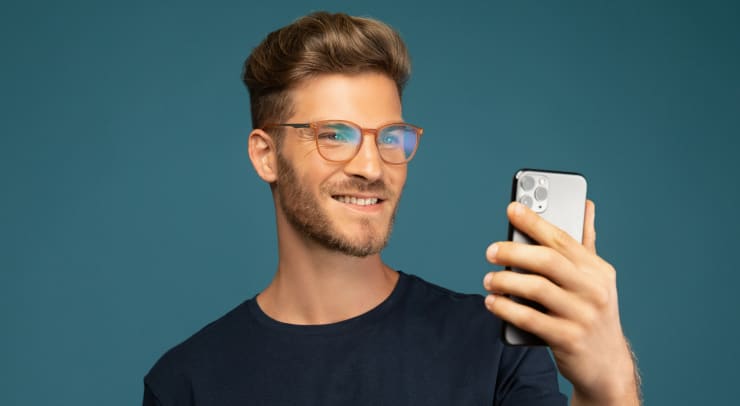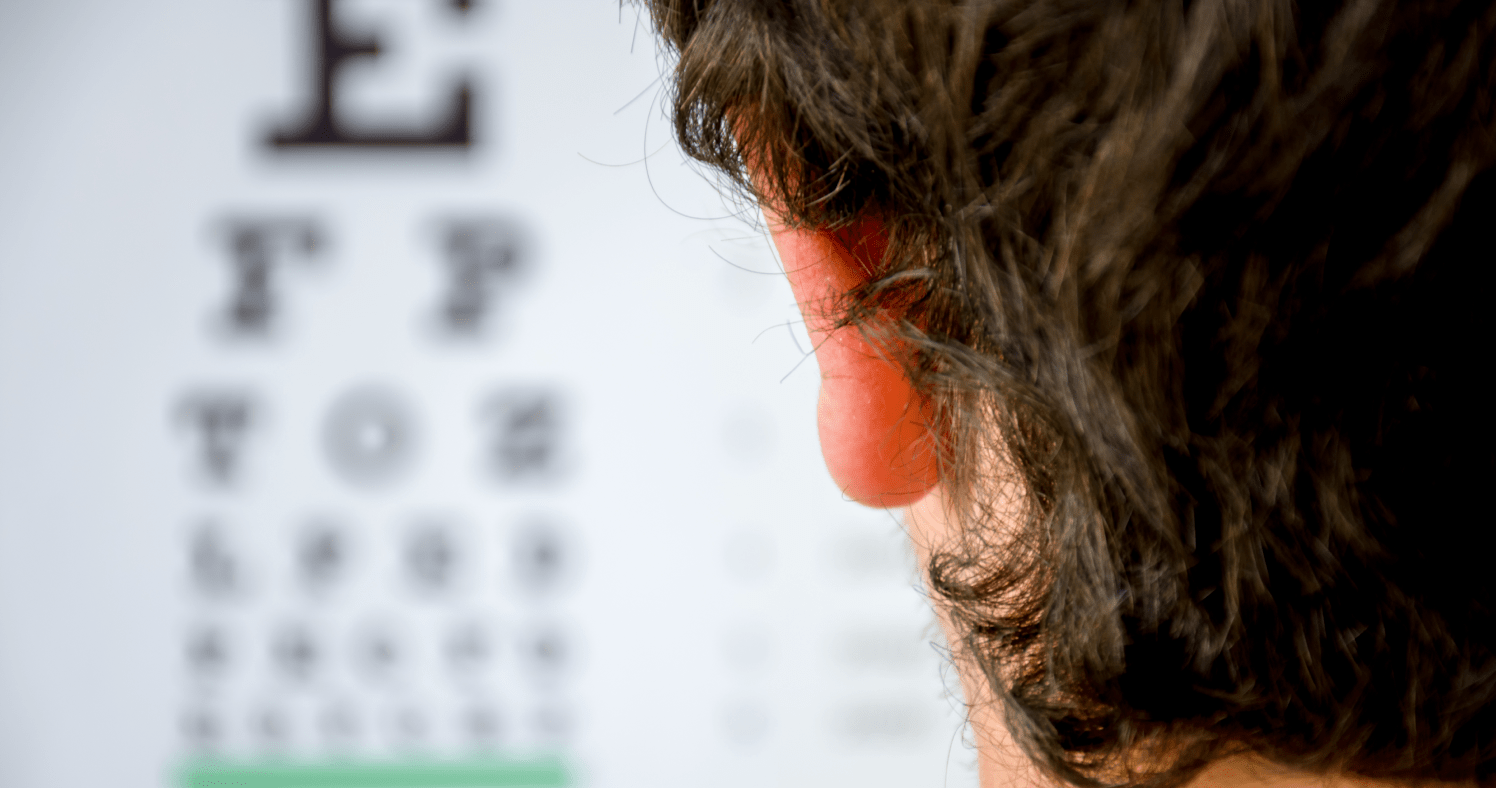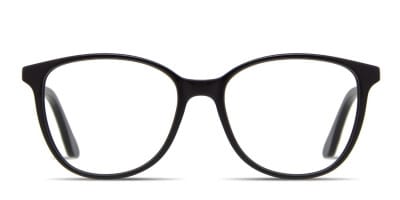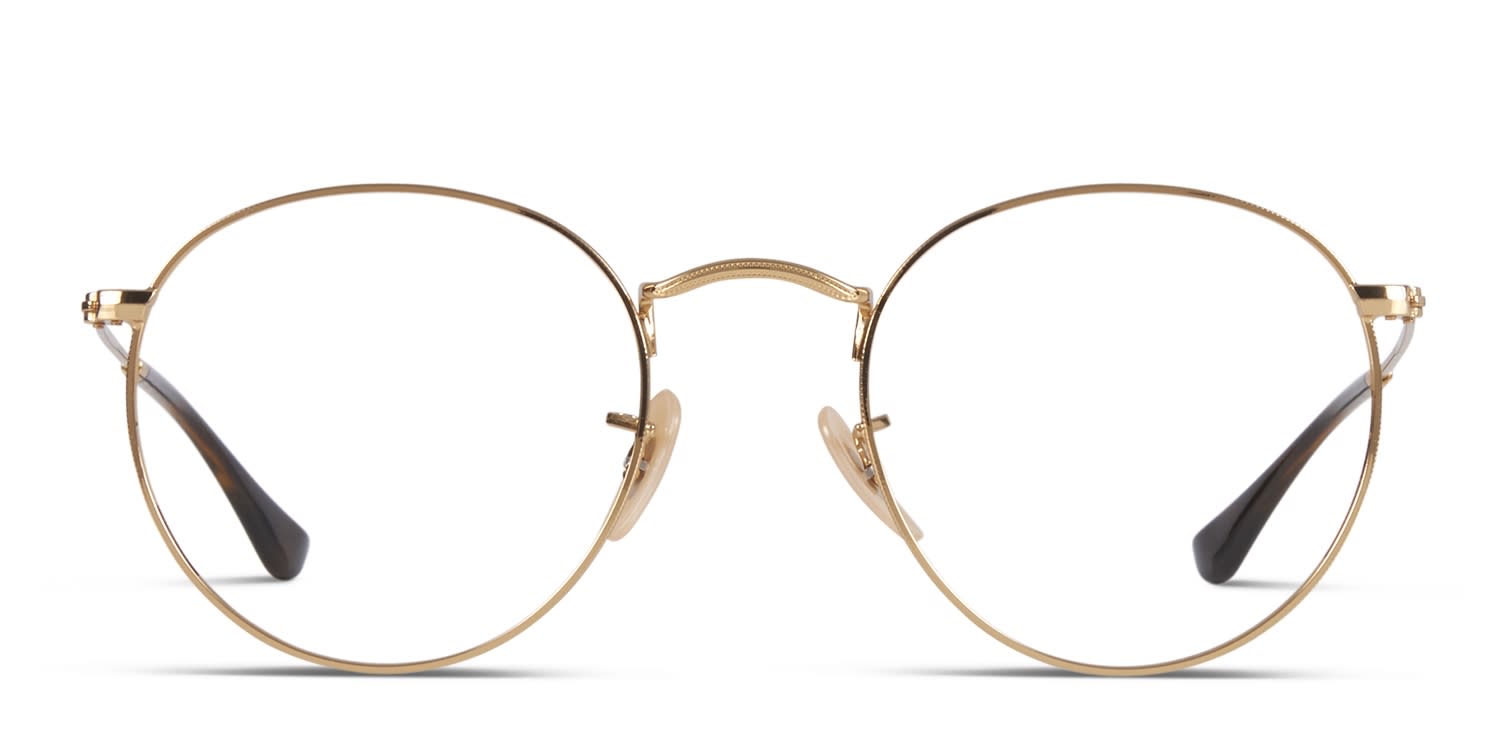How much screen time is okay?
Updated JUN 5, 2023 • 9 min read

Summary in 30 seconds:
In this article, we’ll expand on Digital devices are a mainstay of modern-day life. It is how we connect with friends, go to school or work, and even play games. So…“How much screen time is okay?” To answer this, let’s take a deeper dive into the effects of screen time on visual development, and the influence of blue light on the eyes and body.
In this article:
- What is blue light?
- How does blue light affect the eyes (and body)?
- Screen time and time of day
- Blue light filtering lenses
- Nutrition and blue light filtration
- Tips and guidelines
What is blue light?
Blue light is emitted from computers, today’s indoor lighting, TVs and tablets but the main source of blue light is from the sun. Blue light is only a portion of a wide range of wavelengths that make up the electromagnetic spectrum which includes radio waves, microwaves, infrared, visible light, UV, X-rays and gamma rays. Wavelengths of visible light fall between 380nm and 740nm on the electromagnetic spectrum; the range for blue light is 415nm to 495nm.
Shorter, higher energy blue wavelengths of light scatter more than less energetic, longer wavelengths. This scattering of blue light in the atmosphere is responsible for the blue color of the sky. LED lights emit a wide range of visible light, however in general cool, white LED lights have higher energy blue light output than the longer wavelengths of warm LED lights. [1]
How does blue light affect the eyes (and body)?
The range of blue light wavelengths needs to be divided into two groups as it relates to its effects on the eyes and body: The higher energy blue/violet wavelengths (415nm – 455nm) and the blue/turquoise wavelengths (465nm – 495nm). The lower energy blue/turquoise wavelengths have a positive influence on eye and body wellness. [2] These wavelengths are received by very specialized light sensitive cells in the retina. [3,4]
Information from these specialized cells is sent to the brain’s “super-clock” to play an important role in the regulation of circadian rhythms, the day/night cycle. [3,5,6] This information influences ocular functions like contrast sensitivity, visual acuity and pupillary function. Among other functions, blue/turquoise light influences hormone secretion, heart rate, alertness and body temperature.
Light waves are small units of energy which vary in their ability to penetrate the eye. Higher energy UV and blue/violet wavelengths that reach the retina can induce damage. [7] Fortunately, certain wavelengths are absorbed first by the cornea and then some by the lens before reaching the retina. The range of high-energy light is 380nm to 460nm. The cornea absorbs wavelengths below 300nm; the lens absorbs wavelengths below 400nm. A lens that is more yellow will absorb wavelengths even a bit longer than 400nm.
Since the cornea and lens are typically clear in young eyes, higher energy wavelengths are able to travel deeper into the eyes. Children need to wear lenses that offer UV and blue light protection. The damaging effects of UV and high energy blue light are cumulative. The most retinal damage appears to occur between 415nm – 455nm, peaking at 435nm.
- Age and blue light: As an infant and young person, the structures within the eye are quite clear. With age, the crystalline lens increases in density and takes on a yellow tint. Eventually these age-related changes may lead to cataract formation. The yellow tint in the lens acts as a natural filter of blue light glasses. Larger pupil size and clear structures within the eyes of infants and youths allow for more higher-energy wavelengths to affect the retina. [8]

- How does screen time affect the eyes? Our visual system is designed for dynamic vision, constantly interacting with the environment at a variety of distances. With the advent of computers, cell phones and other devices, prolonged vision at a single distance is common. To see clearly at near, a muscle within the eye needs to contract which then increases the lens curvature increasing the eye’s focusing power.
Like other muscles in the body, sustained contraction may result in a spasm. In the eye, this is known as an accommodative spasm. (Accommodation is the eye’s ability to change focus.) Perhaps you have experienced symptoms of an accommodative spasm, blurry or fluctuating vision, headaches and eye strain after using your digital device. [9,10,11]
The ability to comfortably sustain reading vision changes throughout one’s lifetime. Youths have lots of accommodative power. In the middle years the ability to refocus between distance and reading vision becomes increasingly more difficult. And finally, in older adults, the eyes are no longer able to change focal distances. The ability to sustain clear vision at a reading distance influences visual comfort and the need for glasses while using a digital device.
- How does digital device addiction affect the eyes and body? For some, social media and gaming are very enticing, and they become engaged to the exclusion of other activities. This can affect the eyes, visual performance and healthy communication skills. When text messages are received, emails are checked, and points are scored in a favorite game, the brain releases dopamine as a hormonal “reward.” This leads to an ever-increasing desire to interact with the digital device. However, with prolonged use our “flight or fight” sympathetic nervous system is heightened, leading to overstimulation, moodiness, increased anxiety, irritability and inappropriate behavior. [12]
When using a digital device, there is a lack of physical activity necessary for overall wellness. Exercise plays an important role in both physical coordination and normal, interactive visual performance skills. Sleep disturbances can also be related to the lack of exercise and nighttime exposure to blue light. [13]
Excessive use of digital devices has an impact on the eyes especially during visual development. Notable changes that can be measured by an eye doctor are the diminished ability to accurately focus on a reading distance target and an increased pupil size. Also of importance is the decreased central vision awareness along with increased peripheral awareness at near. Sometimes the lack of central awareness leads to diminished visual acuity. [11,14,15]
Screen time and time of day
Light from the sun is an intense source of blue light. Since blue light suppresses the release of melatonin during the day, it helps to keep us awake and alert. At night the release of melanin helps us to feel sleepy, stay asleep and improves the quality of sleep. This day/night cycle helps to support the healthy regulation of the internal biological clock, the circadian rhythm. [2,16]
LEDs used in overhead lights, computers, TVs, tablets and cell phones emit blue light in the range of 400nm – 490nm. All artificial light but especially exposure to these wavelengths in the evening and at night has been shown to adversely affect sleep patterns. [1]

Blue light filtering lenses
The amount of blue light filtration and particular wavelengths that are absorbed varies with the manufacturer. The need for blue light filtration depends upon time and length of exposure. Remember, lower-energy blue light, especially during the daylight hours, has been shown to have positive effects on sleep patterns, cognitive function and mood. Conversely, higher-energy blue light has been shown to cause retinal damage. [8,17,18]
In general, clear lenses that filter blue light will absorb approximately 30% of these wavelengths depending upon the manufacturer. This would be a good option for long hours on the computer. Certain anti-reflective coatings also offer some blue light protection. Lenses with higher blue light protection will have a tint or surface reflection that is visible. Amber tinted blue filtering lenses have an increased percentage of blue light filtration. These may not be suitable for night driving. [19,20]
Newer “smart” technologies in lens design filter out more harmful wavelengths of blue light while allowing less energetic blue wavelengths to pass. This is certainly a good concept. [19,21]
Nutrition and blue light filtration
Plants need protection from various environmental hazards. Some plants develop a bad taste so animals won’t eat them; others develop pigments to attract insects or birds that are beneficial to their survival. An environmental hazard from which a plant needs protection is UV and high-energy blue light from the sun.
Amazingly, there are certain plant pigments that absorb these wavelengths of light which protect the plant from sunburn. These same pigments that offer protection to plants are also protective in the human eye against blue light damage. These pigments are yellow, orange and red carotenoids. Two of these carotenoids, lutein and zeaxanthin absorb visible blue light 400nm – 500nm. [22]
When an eye doctor looks at the macula inside a young, healthy eye, a yellow optical layer is seen. This is from the deposition of lutein and zeaxanthin. A thicker optical layer offers greater protection from light induced oxidative damage.
There are many food sources of lutein and zeaxanthin including leafy green vegetables, orange bell peppers, asparagus, dried or fresh green herbs, paprika, saffron, and egg yolk. [23]

Tips and guidelines for infants, children and adult screen time
- Guidelines during the developmental years – It’s important to set screen time guidelines for healthy visual, physical and emotional development. Avoid using screen time as a babysitter or to pacify difficult behavior. Developmental delays are associated with increased digital device usage. [9,10,11]
- Birth to 24 months: Screen time should be avoided in this age group. Lutein and zeaxanthin are components of breast milk that support the development and protection of a newborn’s eyes.
- 2 – 3 years: Avoid solo media use. Little ones like to squirm and play around; this is good because it will keep their eyes active. Limit daily use to ten minutes, twice a day.
- Pre-school (3 – 5 years): 1 hour per day with active breaks every 10 – 15 minutes. Watch appropriate programming preferably with your child or caregiver.
- School age and beyond: It is important to develop healthy habits. For example, digital devices should not be used for at least one hour before bed. Meal time should not include cell phones, TVs or tablets. The eyes should be rested by looking at a distance 20 feet away for 20 seconds every 20 minutes. This is known as the 20/20/20 rule. In addition, during your break add several deep blinks to help with dry eyes. Workload, computer and digital device use need to be balanced.
Remember to take into consideration that young eyes need protection from UV and high-energy visible. In addition, increased screen time has been associated with a higher risk of nearsightedness. [13,24]
As a rule of thumb, if possible the distance from your digital device should follow the 1/2/10 rule: No closer than 1 foot for cell phones and tablets, no closer than 2 feet for computers and 10 feet for TVs. Maintain a healthy posture while using digital devices.
There are computer programs and apps to reduce blue light exposure that can be downloaded onto your device. The lights in your bedroom can be replaced with blue blocking light bulbs.
Start your children off with healthy, eye wellness habits, and introduce foods with lutein and zeaxanthin to your diet. [23]
Published May 2, 2023|Updated June 5, 2023
SOURCES

 Oversized
Oversized
 Aviator
Aviator
 Wayfarer
Wayfarer
 Square
Square
 Cat Eye
Cat Eye
 Round
Round